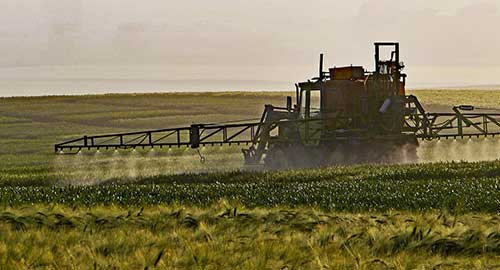The Collaborative International Pesticides Analytical Council (CIPAC) plays a critical role in ensuring that plant protection products are safe, effective, and compliant with global standards. CIPAC has developed a suite of methods for compliance testing of physical and chemical properties of pesticides, which are essential for ensuring regulatory requirements are met. Compliance testing helps protect human and environmental health by ensuring that pesticides are safe and effective.
The Collaborative International Pesticides Analytical Council (CIPAC) plays a critical role in ensuring that plant protection products are safe, effective, and compliant with global standards. CIPAC has developed a suite of methods for compliance testing of physical and chemical properties of pesticides, which are essential for ensuring regulatory requirements are met. Compliance testing helps protect human and environmental health by ensuring that pesticides are safe and effective.
CIPAC methods are well-regarded and recommended by regulatory agencies such as the Australian Pesticides and Veterinary Medicines Authority (APVMA) and Agricultural Compounds and Veterinary Medicines (ACVM). Testing conducted using CIPAC methods is typically easily accepted by these registrants, which underscores the credibility and reliability of these methods.
In agriculture and industry, physical and chemical testing is instrumental in determining the shelf life and fitness for purpose of pesticides during the manufacturing process. By using CIPAC methods, stakeholders can ensure that their products are safe, effective, and compliant with global standards. CIPAC's alphabetised handbooks from A to P, with the most recent (Handbook P) published in 2021, provide a wide range of methods used to test physical and chemical properties of agrichemical products. From pH measurement and sieving techniques to testing the concentration of specific actives in your products using advanced chromatography techniques, CIPAC offers a comprehensive suite of testing capabilities.

Agricultural practices combine strategies, tools and products for crop protection in the production of quality food and sustaining the ecosystem's health.
While CIPAC methods are widely recognised and recommended, there may be limitations due to new discoveries and evolving circumstances. CIPAC is committed to continually improving its methods and addressing any concerns or limitations. The council will be meeting again in June 2023, with the next revised Handbook expected in 2024. Labtec remains at the forefront of innovation in testing of agricultural products by constantly reviewing and updating our in-house techniques as new methods are developed.
Testing Capabilities
Labtec has a proven track record of successfully setting up and conducting a wide range of CIPAC tests, including customised methods tailored to specific client needs. We understand that the registration process can be complex and time-consuming, which is why we work closely with our clients to provide efficient and effective testing services to help ensure their products meet regulatory requirements.
Whether you need to test the physical and chemical properties of your agrichemical products or determine the shelf life and fitness for purpose of your pesticides during the manufacturing process, Labtec has the capabilities and expertise to meet your testing needs. We are committed to delivering exceptional service and providing our clients with the confidence and peace of mind they need to test or bring their products to market.
Some common CIPAC methods we perform are:
|
CIPAC Method
|
Test Parameters
|
Areas CIPAC Method Recommended
|
|
CIPAC MT 185
|
Wet sieve test.
|
Capsule suspensions (CS); dispersible concentrates (DC); emulsifiable granules (EG); emulsifiable powders (EP); oil-based suspension concentrates (OD); suspension concentrates (SC); suspension concentrates for seed treatment (FS); suspo-emulsions (SE); wettable powders (WP)1; water-dispersible granules (WG)1; water-dispersible powders for slurry seed treatments (WS); water-dispersible tablets (WT); water-soluble tablets (ST).
|
|
CIPAC MT 184
|
Suspensibility of formulations forming suspensions on dilution with water.
|
CS; FS; SC; WG1; WP1; WT.
|
|
CIPAC MT 174
|
Dispersibility of water dispersible granules - gravimetric or chromatographic.
|
WG.
|
|
CIPAC MT 172
|
Flowability of water dispersible granules after heat test under pressure.
|
WG.
|
|
CIPAC MT 171
|
Dustiness of granular products.
|
EG; granules (GR); water soluble granules (SG); WG.
|
|
CIPAC MT 160
|
Spontaneity of dispersion of suspension concentrates.
|
CS; SC.
|
|
CIPAC MT 148.1
|
Pourability of suspension concentrates.
|
Emulsions, oil in water (EW); SE.
|
|
CIPAC MT 75.3
|
Determination of pH values.
|
CS; DC; DS; dustable powders (DP); EG; emulsifiable concentrates (EC); emulsions for seed treatment (ES); EP; EW; FS; GR; micro-emulsions (ME); OD; oil miscible liquids (OL); ready to use liquid formulations (AL); SC; SE; SG; soluble concentrates (SL); solutions for seed treatment (LS); ST; tablets for direct application (DT); ultra-low volume liquids (UL); water-soluble powders (SP); water-soluble powders for seed treatment (SS); WG; WP; WS; WT.
|
|
CIPAC MT 53.3
|
Evaluation of wettability, wetting of dispersible powders.
|
EG; EP; SP; WG; WP1; WS.
|
|
CIPAC MT 39.3
|
Low temperature stability of liquid formulations.
|
AL; CS; DC; EC; ES; EW; FS; LS; ME; OD; OL; SC; SE; SL; UL.
|
|
CIPAC MT 36.3
|
Emulsion characteristics of emulsifiable concentrates.
|
EC; EW; ME.
|
|
CIPAC MT 31
|
Free acidity or alkalinity.
|
AL; CS; DP; GR; DC; powders for dry seed treatment (DS); DT; EC; EG; EP; ES; EW; FS; ME; LS; OD; OL; SC; SE; SG; SL; SP; SS; ST; UL; WG; WP; WS; WT..
|
|
CIPAC MT 180
|
Dispersion stability.
|
DC; EG; EP; OD; SE.
|
|
CIPAC MT 47
|
Persistent foaming.
|
CS; DC; EC; EG; EP; ES; EW; FS; ME; OD; SC; SE; SG1; SL; SP1; ST; WG1; WP1; WS1; WT.
|
1 If the product is packaged in a water-soluble bag, the wet sieve, suspensibility, wettability, and persistent foam tests should be performed using a solution consisting of the product and water-soluble bag in the same ratio as that found in the recommended application specification.
In addition to these, Labtec can test for a wide range of active ingredients in different formulation types. For more information or enquiries, reach out to us today.